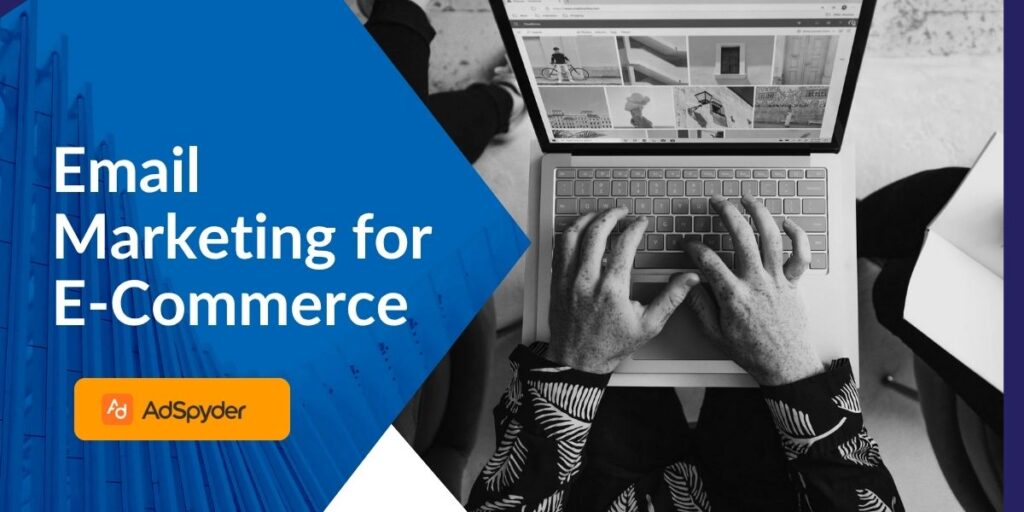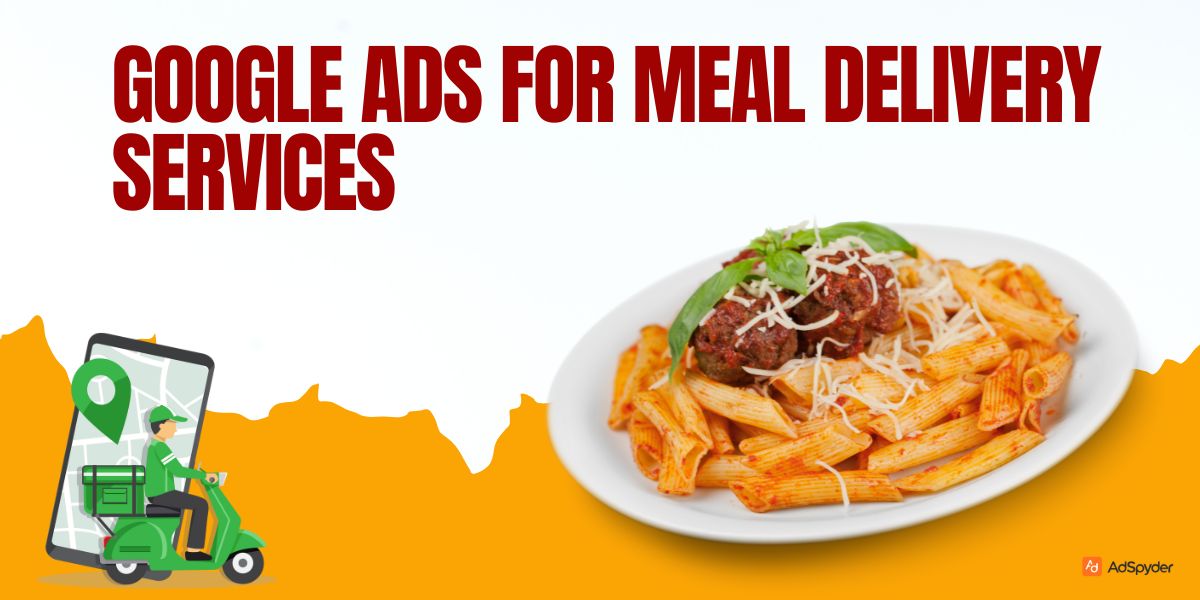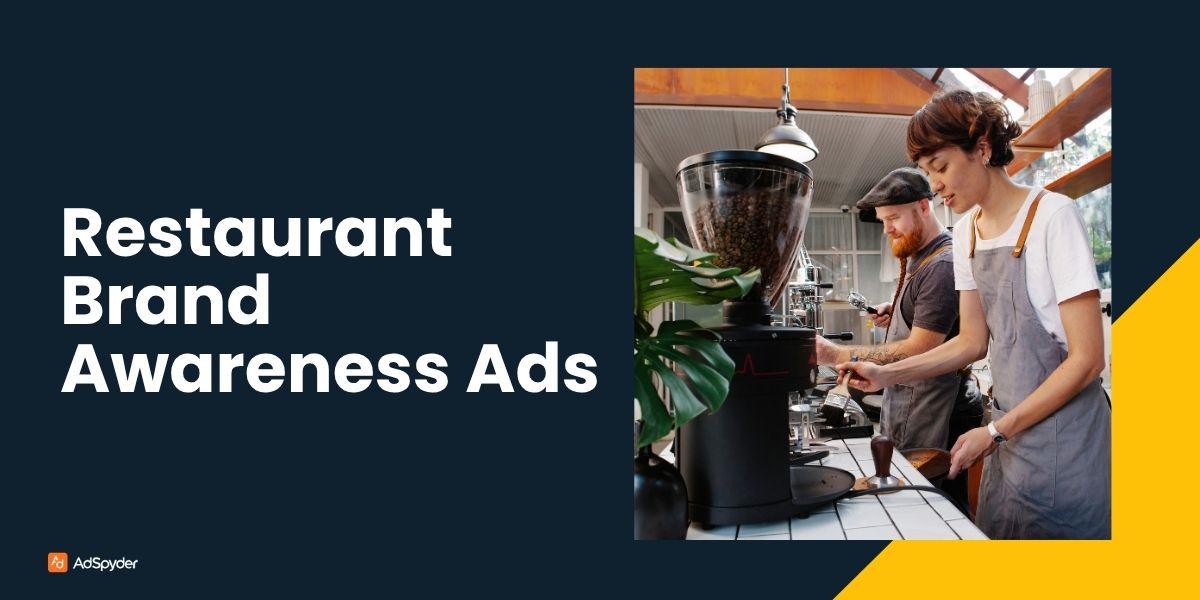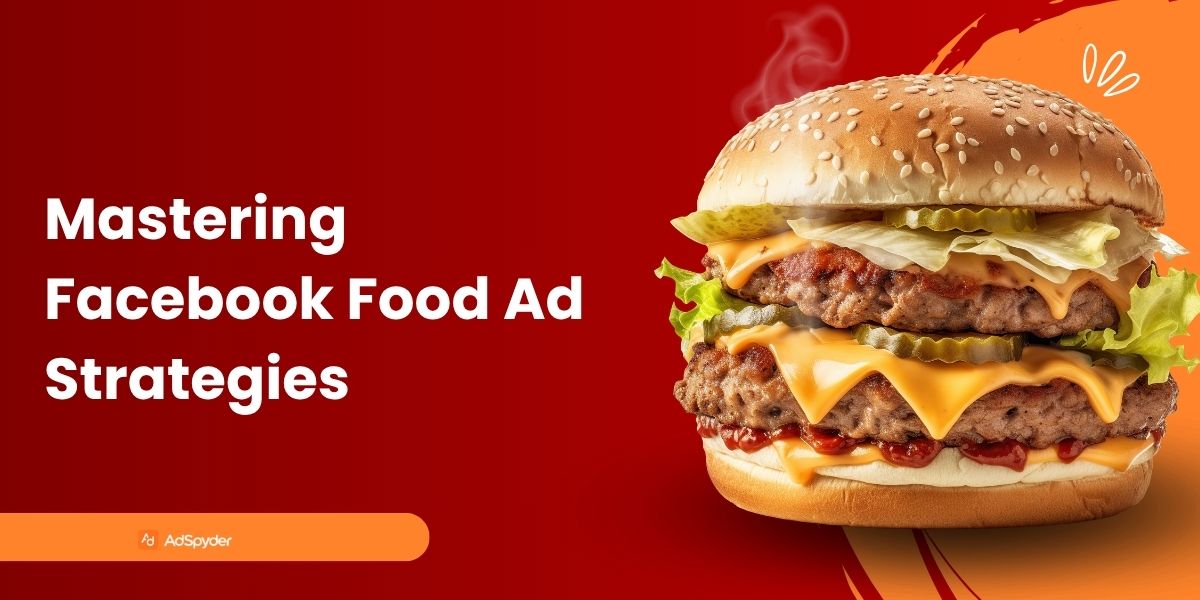Strong client communication is essential for success in the 21st century. Email marketing is one of the most effective methods employed by marketers, yielding high returns on investment while also fostering customer loyalty. The number of email users globally exceeds 4 billion, showcasing this marketing method’s boundless opportunities. This blog will focus on strategies targeted at marketers within the Email Marketing for E-Commerce industry, strategies that will engage your clients better, grow your sales, and help you develop long-term relationships with clients.
Ready to Elevate your Marketing Strategy?
Understanding Your Audience
By understanding your audience, you unlock the key to connection and impact.
Importance of Audience Segmentation
As with all marketing strategies, email marketing requires a clear understanding of the audience and audience segmentation plays a fundamental role in tailoring messages for precise groups, increasing the chances of better engagement and conversion.
- Behavioural Segmentation: Focus on actions people have done, such as purchases made, product browsing, email engagement, etc. For example, more frequent shoppers can be categorised as loyal customers who constantly need to be rewarded with exclusive offers, whereas people who have only purchased once would feel more appreciated with targeted campaigns aimed at bringing them back.
- Demographic Segmentation: Factors of age, gender, and location can be leveraged to create custom solutions on offer. For example, younger customers respond better to promotional materials featuring trendy products, while older customers tend to prefer more classic styles and would appreciate marketing that draws toward timeless choices.
- Psychographic Segmentation: This requires a deeper approach to dividing customers by understanding their lifestyles, values and interests. For example, marketers appealing to environmentally conscious consumers focused on highlighting sustainable product lines would satisfy their needs.
Techniques for Gathering Customer Data
Drawing out vital information from customers helps deal with segmentation and is very important. Here’s what you can do:
- On-Site Behaviour Tracking: Use the website to track interactions of clients through various analytic tools at your disposal. This can give important information on interactions with particular products and the time clients spend on various pages.
- Exit-Intent Popups: Change how you communicate with customers. Provide the customers with added perks like discounts or exclusive information when they leave their addresses.
- Surveys and Feedback Forms: Using forms, ask the customers regarding their expectations, choices and shopping experiences. With this data, you will be able to make good segmentation decisions.
Creating Buyer Personas
Buyer personas are marketing metrics that entail a particular customer’s details, which are driven by data and research. Developing complete personas enables marketers to understand their audience better and subsequently improve their email marketing campaigns. Consider including:
- Demographic Information: Demographic details such as age, gender, income level, and educational background.
- Shopping Behaviour: Average expenditure, channel of shopping, and brand preference.
- Pain Points and Motivations: Assess the problems your customers need solving in addition to examining what encourages them to buy. Using an example, a time-saving solution will appeal to busy professionals.
Check Out – Bulk Email Advertising
Building a Quality Email List
A strong email campaign starts with the right audience. Focus on growing a list of engaged, permission-based subscribers who want to hear from you.
Strategies for List Building
To successfully implement a strategy, you must have a solid email list. Different effective methods include:
- Incentivised Sign-Up Forms: Motivate users with special access, discounts, or freebies for signing up. Some of the convincing CTA’s include “Sign up now to receive 10% off on your first purchase,”
- Content Upgrades: Valuable content like guides, checklists, or exclusive video series related to your products can be created and offered for free, but only upon signing up with an email.
- Social Media Promotions: Promoting an email sign-up page across your social media platforms or creating posts that highlight the benefits of subscribing to the email list aids in driving traffic to the sign-up page.
Importance of Permission-Based Marketing
Customer trust and credibility become essential when dealing with marketing based on approval. Ensure customer permission by confirming they voluntarily subscribe to your emails. This can be done through:
- Clear Opt-In Processes: Use straightforward opt-in forms that clearly outline what subscribers will receive in terms of content and their broadcasting cadence.
- Double Opt-In Methods: Reduce the chances of phantom entries by requiring email address confirmation through a double opt-in process.
Tips for Maintaining List Hygiene
A clean email list is one of the most effective ways to increase engagement and improve deliverability rates. Check out the following tips:
- Regular Clean-Up: Conduct periodic reviews of your email list. Shred inactive subscribers who are no longer engaging with your emails over a considerable period. Consider trying a win-back campaign for those who might still care.
- Use Segmentation to Target Inactives: Customise an entire campaign for a specific inactive subscriber group with the express purpose of re-engaging them. Focus on sending targeted content designed to win their attention: personalised messages and special offers.
- Encourage Preference Updates: Let your subscribers change how often they receive emails. Not only does this engagement tactic increase list engagement, but it also decreases the chances of being unsubscribed.
Crafting Compelling Email Content
Great content keeps readers hooked and drives action. From catchy subject lines to persuasive calls-to-action, every word should serve a purpose.
Writing Engaging Subject Lines
After writing the body of the email, you should compose the title or subject since it is the first thing that catches the recipient’s eye. Use this framework to craft an effective subject line:
- Keep It Concise: Try to use 6-10 words, as that will assist in fully showing on mobile devices. A brief line can work wonders.
- Incorporate Personalisation: Mention the name of the intended person or even state what they ordered previously, which assists in adding a personal touch.
- Evoke Curiosity: Create intrigue by hinting at exclusive content or time-sensitive offers. Phrases like “Unlock Your Exclusive Discount!” can drive curiosity and encourage opens.
Personalization Techniques
Personalisation is more than just adding the recipient’s name; it is customising content for them based on their preferences and behaviour. Here’s how:
- Dynamic Content Blocks: Implement dynamic content that alters depending on the subscriber’s information. For instance, show different products or offers relative to their previous purchases or browsing habits.
- Behaviour-Based Triggers: Initiate emails based on particular actions, such as shopping a specific category or looking at a product and not buying it.
- Tailored Recommendations: Analyse data to provide specific, personalised product recommendations, thus creating a meaningful shopping experience.
Creating Valuable Content
It is important for business purposes to maintain subscribers and create a lasting bond with them by providing compelling content. Here are a few strategies that can be implemented in the marketing emails:
- Informative Product Guides: Provide step-by-step tutorials explaining how harvesting devices may be used optimally. If you manufacture kitchen appliances, provide associated recipes or tips on how to get the best out of the appliances.
- Member-Only Offers: Give your customers a reason to stay engaged by offering special deals available only to members. This benefits email list owners by providing incentives for new customers while letting loyal customers feel appreciated.
- Storytelling and Brand Values: Narrate tales on the mission of your brand and describe the producers. This strengthens the bond established and is likely to humanise the business.
Related – Email Marketing for Consultants
Types of Email Campaigns for E-Commerce
Not all emails are created equal. Explore the key types of email campaigns—from welcome series to cart recovery—that boost engagement and sales.
Welcome Emails
With new subscribers, welcome emails create the first chance to engage with them. They usually enjoy a high open rate, so setting the right impression is very important. Below are some important points to cover:
- Thank You Message: Express gratitude for subscribing and outline what they can expect from your emails.
- Incentives: Provide incentives to them on their next purchase.
Abandoned Cart Emails
Recovering lost sales is very well done with emails tagged as abandoned cart emails. These abandoned cart emails serve as prompts for users to complete their purchases. Below are some critical pointers to increase their effectiveness:
- Tailored Messaging: Use the customer’s name and reference the exact products they left in their cart to create a personalised experience.
- Urgency and Incentives: Encourage completion of the purchase by including time-sensitive discounts or limited stock alerts.
Promotional and Seasonal Campaigns
Visibility of your product during holidays, events, and even product launches can be achieved through promotional campaigns.
- Timely Messaging: Plan campaigns around relevant holidays or seasons. For example, create campaigns for Black Friday, Christmas, or back-to-school shopping.
- Eye-Catching Visuals: Be sure to use powerful visuals coupled with strong calls-to-action, which will help grab attention and clicks.
Product Launch Announcements
Notice that email marketing can stir interest and anticipation on the eve of product launches for new items. Consider these details on how to execute product launch emails:
- Sneak Peeks: Offer sneak previews of upcoming products to build anticipation.
- Early Access for Subscribers: It is a good idea to provide early access to subscribers so they feel exclusive.
Re-Engagement Campaigns
Reengagement campaigns have proven beneficial in trying to target disengaged subscribers. Consider these strategies:
- Feedback Requests: Ask for feedback on why they haven’t engaged and what they’d like to see in the future.
- Exclusive Offers: Provide special deals or exclusive content to entice them back into your sales funnel.
Designing Effective Email Templates – Email Marketing for E-Commerce
Looks matter in email marketing. A well-designed template ensures your message is visually appealing, mobile-friendly, and easy to navigate.
Importance of Mobile Responsiveness
By now, you should understand the importance of mobile responsiveness. Since more than half of all emails are opened on smartphones or tablets, it’s crucial to design templates that look great and function seamlessly on mobile devices. Here are strategies aimed at enabling mobile responsiveness that can help improve your design.
- Single Column Layout: Smaller screens necessitate single-column layouts that make scrolling easier while providing a more readable format. This enhancement serves to simplify and streamline the design.
- Large Fonts and Buttons: Guarantee the optimal visual experience by increasing font sizes and ensuring texts are readable. For mobile devices, buttons need to be adequately sized so users can comfortably tap them.
- Test Across Devices: Always utilise multiple devices and check a variety of email clients to ensure the aesthetics and functionalities of the email template.
Key Elements of a Well-Designed Email
A well-designed email should include the following elements:
- Clear Call-to-Action (CTA): Every email must include a prominent and specific CTA that indicates what action the reader should take next (e.g. shop the sale, read a particular blog post).
- Engaging Visuals: Put any relevant pictures, images, or graphics about the content at hand. These can include product images, advertisement banners, and client reviews, among others.
- Consistent Branding: An email must also adhere to the company’s fonts and colour choices, aiding in maintaining brand consistency.
A/B Testing for Design Variations
The powerful nature of A/B testing can be employed to optimise users’ email designs. Other than the subject line, there are many elements to an email that can be tested against one another. Use these steps to ensure effectiveness during testing:
- Test One Element at a Time: While testing, it is important to focus on one element only, for example, images, subject lines, or CTA buttons. This way, it is possible to evaluate the isolate the changes that yield the heightened impact.
- Analyse Results: Each test has specific metrics that are used to evaluate the results. For variant success evaluation, metrics such as open rates, click rates, sales, and other relevant parameters should be measured.
- Iterate and Improve: Consider revising the emails that did not perform so well. Doing this helps in strategising for better performance with a reasonable chance of success.
Automating Your Email Marketing
Save time and boost efficiency with automation. Set up triggered emails that nurture leads and convert prospects—without lifting a finger each time.
Benefits of Email Automation
Automated emails make it easy to reach your audience with specific messages at the right time, alleviating the need for continued effort from your side. The importance of automation cannot be understated. Some useful features include:
- Efficiency Gains: Automation takes the mundane work away, leaving the marketer free to think at a higher level and get creative.
- Improved Customer Experience: A client’s problem can be resolved instantly, as the messages pushed out in automated emails are behaviour-triggered, making them more timely.
- Increased Engagement: Workflow automations can help nurture leads and engage customers at every stage of their journey, encouraging more people to convert.
Tools and Platforms for Automation
There are many tools and platforms out there in the market. Let’s take a look at some of the popular options out there:
- Mailchimp: A really intuitive platform with good automation capabilities, such as customer segmentation and abandoned cart emails.
- Klaviyo: Klaviyo is built specifically for e-commerce, with rich automation features, great integration and analytics, and tons of data on what users are doing.
- ActiveCampaign: Offers sophisticated automation, including a native CRM and advanced segmentation, for marketers who leverage multiple channels in addition to email.
Examples of Automated Workflows
Automated workflow features can greatly improve an email marketing campaign. Some examples include:
- Welcome Series: You can send a series of welcome emails to new subscribers.
- Abandoned Cart Recovery: Automatically notifying customers about their incomplete purchases with additional recommendations, incentives, and discounts to encourage checking out.
- Re-Engagement Series: Targeting inactive subscribers automatically with special offers, surveys, or solicited feedback to encourage their return.
Recommended For You – Email Marketing for Affiliates
Measuring Success for Email Marketing for E-Commerce
You can’t improve what you don’t measure. Track key metrics like open rates, click-throughs, and conversions to gauge performance and refine strategy.
Key Metrics to Track
Measurable metrics must be tracked to gauge the effectiveness of the email marketing campaigns. Track the following KPI:
- Open Rates: Shows how many users opened your email. A higher open rate indicates that you have created your subject line very efficiently.
- Click Through Rates (CTR): Represents the percentage of people who clicked on a specific link provided within the content of the email. A higher click-through rate (CTR) shows that your content resonates with and provides value to your audience.
- Conversion Rates: Measures the percentage of users who perform the desired action after clicking through the email, usually a purchase.
- Unsubscribed Rates: Tracking the number of unsubscribed users gauges whether the content or the frequency of emails being sent out is an issue.
Tools for Analytics and Reporting
Using the appropriate tools can provide you with useful information on how well your email marketing is performing. Some well-known tools for analytics are:
- Google Analytics: You can monitor the traffic and conversion rates to your site from email links, which helps in assessing the effectiveness of your email campaigns.
- Email Marketing Platforms: Most email marketing platforms come with built-in analytics that give reports pertaining to the industry average and KPI benchmarks like the service users’ annual growth, email open rates, CTR, among others.
Adjusting Strategies Based on Performance Data
Once you have gathered the data, you can now use it to your benefit by improving your email marketing campaigns. Here’s what you need to do:
- Determine trends: Notice trends in your content over time, for example, response rates on certain types of content or subject lines.
- Experiment & Iterate: Do not be afraid to experiment based on your findings. For example, if a particular type of promotional email is working, develop more of that.
- Get Feedback: Interact with your audience to find out what they like and what they expect through online surveys and polls.
Common Mistakes to Avoid in Email Marketing for E-Commerce
Even seasoned marketers slip up. Avoid common pitfalls like spamming, poor segmentation, and weak copy that can derail your email efforts.
Overloading Subscribers with Emails
While it is crucial to grab attention, overcommunication can push users towards unsubscribing. Emails may quickly start to feel invasive, and finding the sweet spot is critical.
Neglecting Mobile Optimisation
With the advent of smartphones, mobile optimisation is often the last thing on one’s mind. With such a user base, enhanced email performance requires mobile optimisation.
Ignoring GDPR and Compliance Regulations
Not following laws such as GDPR could get you in serious trouble. Subscribers need to be able to opt into lists and set preferences easily, but detailed verification is key to avoiding legal consequences.
Related – Email Marketing for Non-Profits
FAQs for Email Marketing for E-Commerce
What is email marketing for e-commerce?
In e-commerce, sites use email marketing to send tailored messages to both prospective and current customers with the objective of product promotion, relationship management, and sales.
What are the best strategies for growing a high-quality email list from scratch?
One can create a good email list by providing rewards for signups, utilising exit intent pop-up windows, and advertising on other social media platforms, as well as the website.
What types of emails should I send?
Welcome emails, promotional offers, reminders for abandoned carts, announcements for new product launches, and re-engagement campaigns fall under these categories.
How crucial is mobile optimisation?
Over half of emails are opened on mobile phones; therefore, it is important that those emails are responsive, improving user experience, making mobile optimisation crucial.
What are the most important metrics to track for successful email marketing performance?
The most important ones are open rates, click-through rates (CTR), conversion rates, unsubscribe rates, and email campaign performance evaluation.
How can I automate my Email Marketing for E-Commerce?
Platforms such as MailChimp or Klaviyo enable email marketing automation by designing workflows for welcome onboarding sequences, abandoned carts, and re-engagement emails.
What are the common pitfalls to avoid in email marketing?
Common mistakes include sending too many emails, neglecting mobile optimisation, and failing to comply with regulations like GDPR.
Recommended For You – Email Marketing for Events
Conclusion for Email Marketing for E-Commerce
Businesses that engage in e-commerce find emails to be an incredibly effective form of communication with their clients. With a thorough analysis of the preferred demographics, one may build a quality email list and market through content crafting, automation, and assessments. Such strategies enable the marketer to create campaigns that are engaging and maximise sales.
These solutions, when implemented, should set one on the journey of emails becoming an incredible driving force behind e-commerce success. Learn to master learning from results as well as improving to fulfil the ever-shifting demands of the intended audience.




